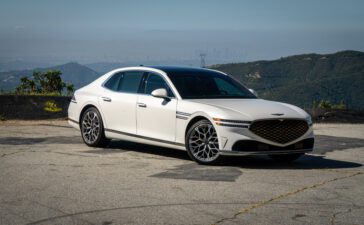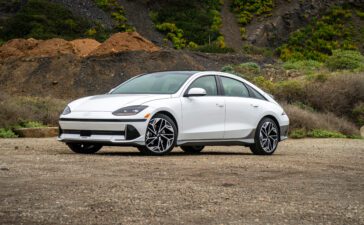The UAW has been on strike since September 15th, strategically walking out on various factories and parts distribution centers run by Ford, GM, and Stellantis. It’s called a stand-up strike, and these moves maximize the strike fund and poke holes in the Detroit automaker’s production lines. The latest was a massive one. The strike took aim at Ford’s Kentucky Truck factory, and when negotiations fell through after only 15 minutes, 8700 workers rolled right out the door. Shutting down one of Ford’s most profitable assembly lines. The plant makes the F-250 through 550 super duty pickups, Lincoln Navigator, and the Ford Expedition bringing in 25 billion a year for Ford.

“We have been crystal clear, and we have waited long enough, but Ford has not gotten the message,” Shawn Fain said on Wednesday. “It’s time for a fair contract at Ford and the rest of the Big Three. If they can’t understand that after four weeks, the 8,700 workers shutting down this extremely profitable plant will help them understand it.”
Other than fair wages and retirement, one of the big items on UAW President Shawn Fain’s list is the battery factories used for the shift to BEVs. While electric vehicles have been marketed as a brighter tomorrow for you, me, and the whole world, it has been a dark cloud hanging over the heads of the American auto worker. Because the factories assembling the batteries are a partnership between the Big Three and the battery manufacturers, they are able to circumvent the UAW. Fain is seeking to ensure that as the move to BEVs advances, even beyond just battery production, workers will be compensated fairly.
Stellantis, thus far, is also unwilling to add the battery plant workers to the UAW national contract, and in a rather cryptic statement on X on Thursday, Fain said, “Here’s to hoping talks at Stellantis today are more productive than Ford yesterday.”
It looks like only GM is willing to make the concession and put the battery plants under the national contract, which happened when the UAW threatened to shut down their Arlington Texas site. And while this is progress for the union, they still say there’s more work to be done with regard to everything else they need. The Big Three have a different view and believe what they have brought to the table is all they can manage.
It’s hard to take the Big Three seriously. They’ve spent billions of dollars on stock buybacks since they recovered from the 2008 recession, a 40% increase in CEO pay over the past 4 years, while the UAW worker’s wages have stagnated. They’ve seen massive profits over the past 4 years as well and are expected to earn 32 billion in 2023. And, of course, it’s more complicated than just numbers written on a piece of paper. But it seems like the Detroit automakers could try harder to give their workers a better life.
















